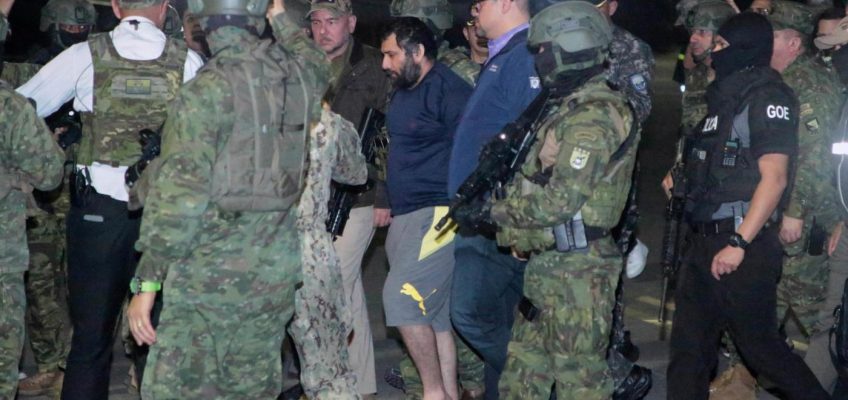By DAVE COLLINS
The head of a violent Ecuadorian gang accused of smuggling cocaine and firearms between South America and the U.S. pleaded not guilty to drug and gun charges Monday in New York.
Appeals court orders new trial for man convicted in 1979 Etan Patz case
Jimmy Buffett’s widow accuses financial adviser of breaching fiduciary duty in $275M trust battle
Alabama man’s death is ruled a homicide after police kneeled on his neck
Malcolm-Jamal Warner, ‘Cosby Show’ actor, dies in Costa Rica drowning
As Trump’s raids ramp up, a Texas region’s residents stay inside — even when they need medical care
José Adolfo Macías Villamar, whose nickname is “Fito,” appeared in federal court in Brooklyn a day after Ecuador extradited him to the U.S. A judge ordered him detained until trial and set his next court date for Sept. 19.
U.S. prosecutors accuse Macías of leading the vicious Los Choneros gang that used hitmen, bribes and military weapons, including machine guns and grenades. The hitmen, or sicarios, murdered, tortured and kidnapped people in Ecuador as the gang committed violence against law enforcement, politicians, attorneys, prosecutors and civilians, authorities said.
Los Choneros also worked with Mexican drug cartels to ship cocaine from Colombian suppliers through Ecuador and Central America to the U.S., and shipped firearms from the U.S. to South America, prosecutors said.
FILE – This wanted poster posted on X by Ecuador’s Ministry of Interior, Jan. 9, 2024, shows Adolfo Macías, alias Fito, the leader of Los Choneros gang. (Ecuador’s Ministry of Interior via AP, File)
“Macías Villamar poses an extraordinary danger to the community,” U.S. prosecutors wrote in a request that Macías be detained without bail until trial. “The Court should enter a permanent order of detention, as no condition or combination of conditions can assure the safety of the community or assure Macías Villamar’s appearance at trial.”
Macías’ lawyer, Alexei Schacht, who entered the not guilty pleas on Macías’ behalf, said he was eager to see the government’s evidence of alleged drug and firearms trafficking.
“As far as I am aware, he did neither,” Schacht said in an email.
Macías told the judge he was not guilty and understood his legal rights. Magistrate Judge Vera Scanlon also ordered that Macías’ health problems, including high blood pressure, gastritis and bullet fragments in his body from a years-old shooting, be treated appropriately while he is detained.
Macías escaped from a prison in Ecuador in January 2024 and wasn’t caught until last month, when he was found in an underground bunker at a relative’s mansion in the port city of Manta. He was serving a 34-year sentence for drug trafficking, organized crime and murder when he escaped. He also fled from a maximum-security prison in February 2013 but was recaptured a few weeks later.
Los Choneros emerged in the 1990s and Macías has been its leader since 2020, authorities said.
Macías cultivated a cult status among fellow gang members and the public in his home country. While behind bars in 2023, he released a video addressed to “the Ecuadorian people” while flanked by armed men. He also threw parties in prison, where he had access to everything from liquor to roosters for cockfighting matches.
Escorted by soldiers and police officers, Adolfo “Fito” Macias, the leader of the Choneros gang, arrives in Guayaquil, Ecuador, after getting detained, Wednesday, June 25, 2025. (AP Photo/Joffre Flores)
A federal grand jury in New York City indicted him on seven charges in April and returned an updated indictment in late June. The charges include international cocaine distribution conspiracy, use of firearms in furtherance of drug trafficking and straw purchasing of firearms conspiracy. If convicted, he could face 20 years to life in prison.
“The defendant and his co-conspirators flooded the United States and other countries with drugs and used extreme measures of violence in their quest for power and control,” Joseph Nocella Jr., U.S. attorney for the Eastern District of New York, said in a statement.




